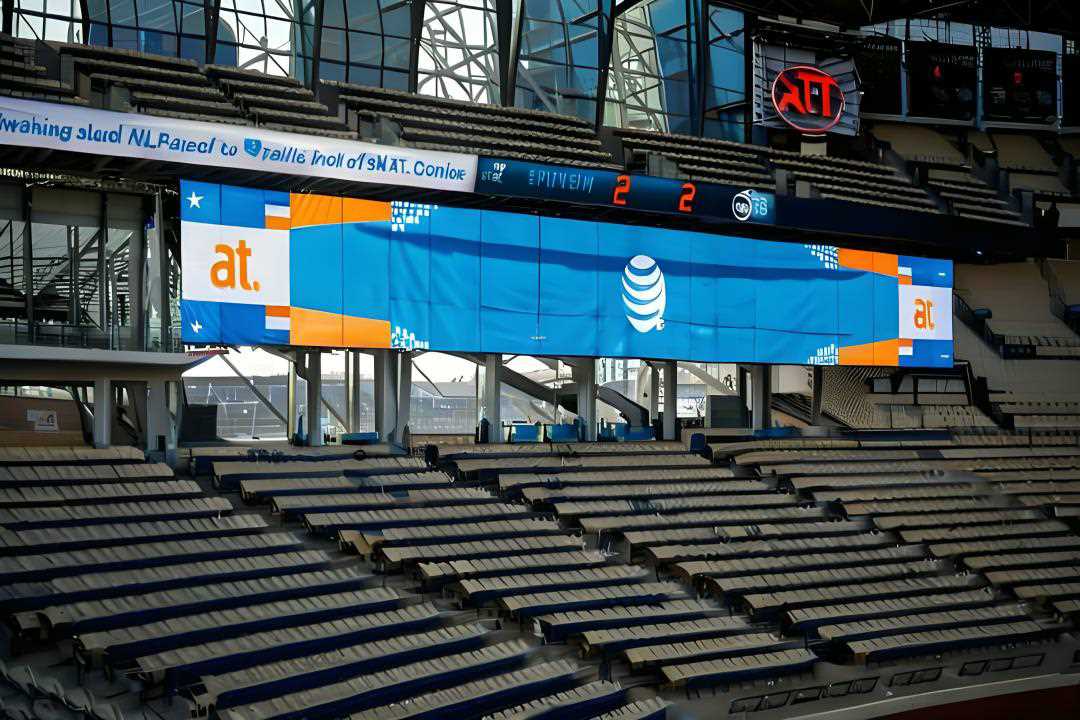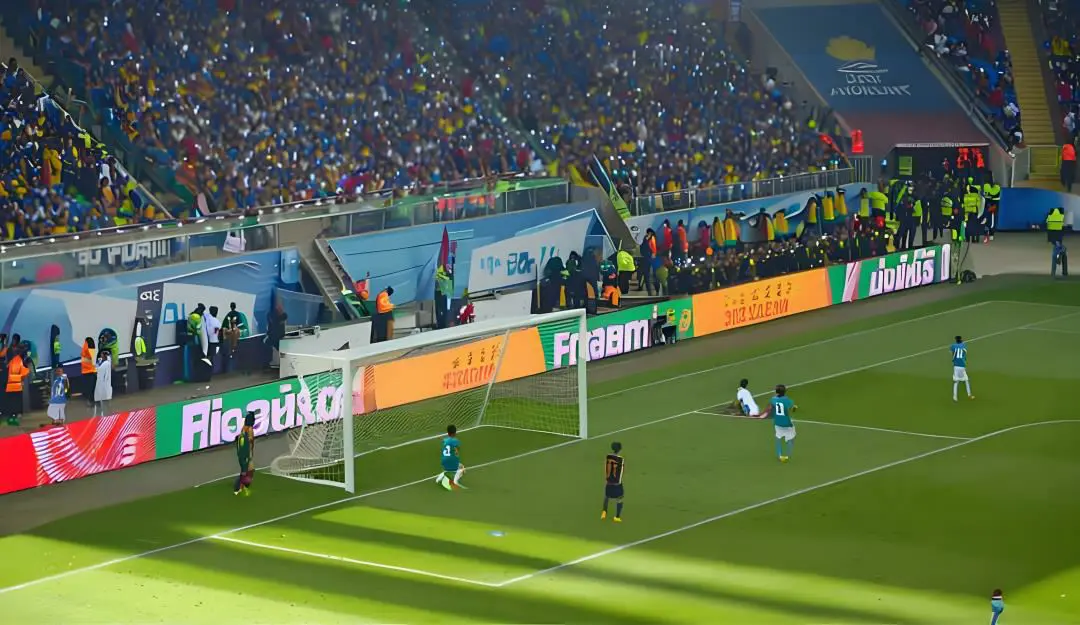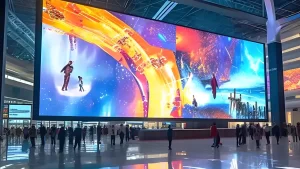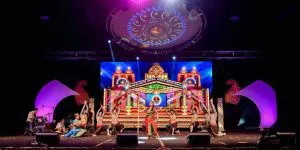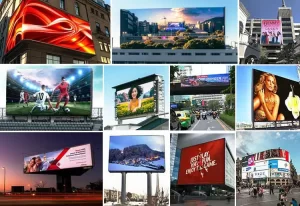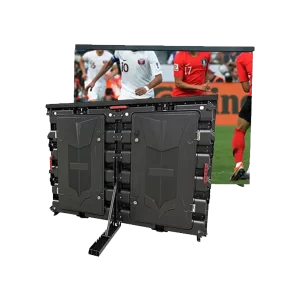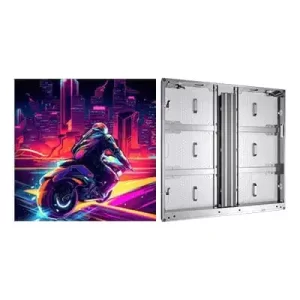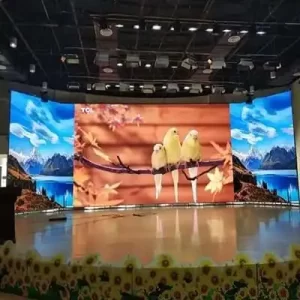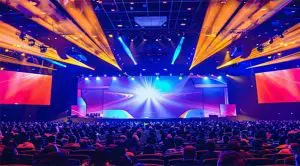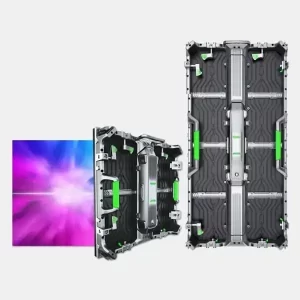An outdoor LED display for a sports arena is a high-performance digital screen designed to enhance the spectator experience by providing real-time updates, live game visuals, advertisements, and interactive content. These displays are built to withstand outdoor environments while delivering vibrant visuals, making them a must-have for stadiums and sports venues.
In this guide, we’ll explore the features, benefits, applications, and considerations for choosing the right outdoor LED display for a sports arena.
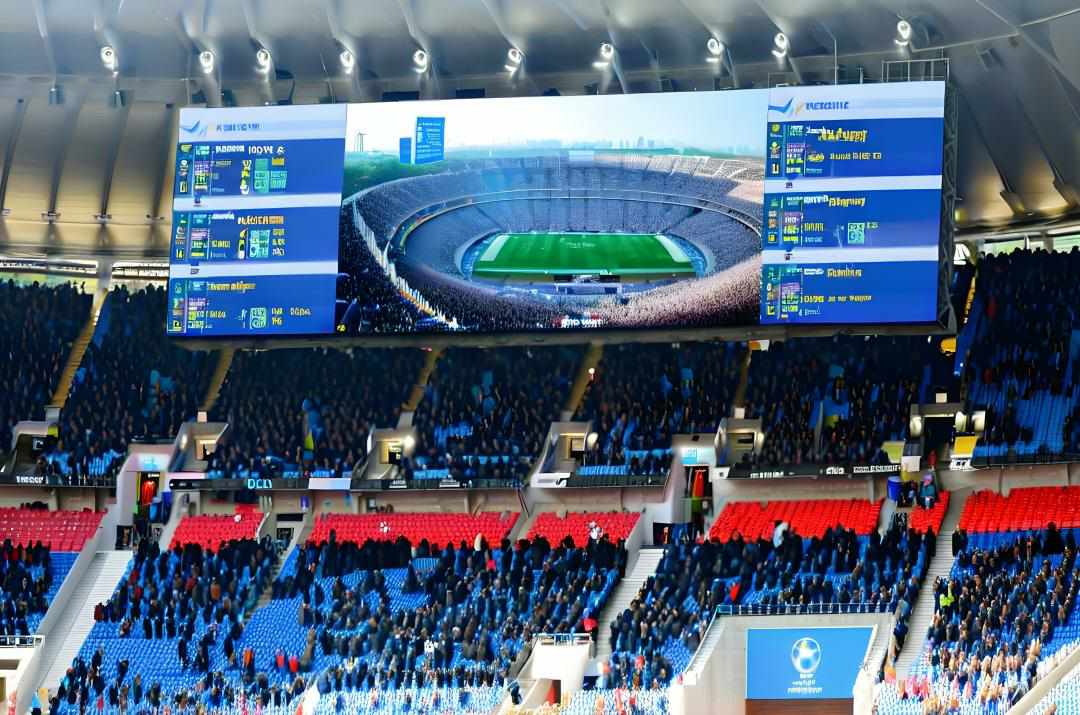
What Is an Outdoor LED Display for a Sports Arena?
An outdoor LED display for a sports arena is a durable, high-brightness digital screen that uses light-emitting diodes (LEDs) to showcase dynamic content. These screens are typically installed in sports venues to display:
- Live game feeds
- Scores and statistics
- Advertising and sponsorships
- Fan engagement content
They are designed to be weatherproof, highly visible, and scalable, ensuring they perform well in large, open-air environments.
Key Features of Outdoor LED Displays for Sports Arenas
Outdoor LED displays for sports arenas are equipped with advanced features to meet the demands of large-scale events:
1. High Brightness and Contrast
- Brightness Levels: 5,000–10,000 nits ensure visibility even in direct sunlight.
- High Contrast Ratios: Deliver clear visuals with vibrant colors, enhancing the viewing experience.
2. Real-Time Content Updates
- Seamlessly display live game feeds, scores, and instant replays.
- Sync with other screens around the stadium for consistent updates.
3. Weatherproof Design
- IP65 or Higher Rating: Protects against rain, dust, and extreme temperatures, ensuring uninterrupted performance in any weather.
4. Wide Viewing Angles
- 160–180° Viewing Angles: Ensure everyone in the stadium has a clear view of the screen.
5. Modular and Scalable
- Made of modular panels, LED displays can be customized to any size or shape, from scoreboard screens to massive video walls.
6. High Refresh Rate
- Refresh Rates of 3,840 Hz or Higher: Provide smooth video playback, essential for live game footage and instant replays.
7. Durability
- Designed for long-term outdoor use with 50,000–100,000 hours of operational life.
- Advanced cooling systems prevent overheating during extended use.
8. Energy Efficiency
- Modern LED technology reduces power consumption, making these displays cost-effective for large venues.
Benefits of Outdoor LED Screens for Sports Arenas
Outdoor LED Screens provide several advantages for sports arenas, enhancing both the fan experience and revenue opportunities:
1. Enhanced Spectator Experience
- Display live game action, instant replays, and player stats, ensuring fans stay engaged and informed.
2. Increased Advertising Revenue
- Offer premium advertising space for sponsors with dynamic, full-color visuals.
- Rotate multiple ads on the same screen, maximizing revenue potential.
3. Real-Time Updates
- Display live scores, game statistics, and announcements, keeping fans informed throughout the event.
4. Fan Engagement
- Use LED displays for fan interactions, such as social media walls, polls, or live camera feeds (e.g., “Kiss Cam” or “Fan Cam”).
5. Versatility
- Use screens for multiple events: sports games, concerts, and community events.
- Adapt content instantly for different sports or occasions.
6. Long-Term ROI
- Durable and energy-efficient, LED displays provide a long-term advertising and engagement platform, reducing operational costs over time.
Applications of Outdoor LED Displays in Sports Arenas
Outdoor LED displays can serve multiple purposes in sports arenas, enhancing both functionality and entertainment:
1. Scoreboards
- Display live scores, game stats, timers, and player information in real-time.
- Provide a focal point for game updates.
2. Perimeter LED Displays
- Surround the field or court with LED ribbons to display advertisements, team branding, and live game updates.
- Create a visually immersive environment for fans.
3. Video Walls
- Install large video walls in prominent locations (e.g., above the stands or in the entryway) to showcase live footage, highlights, or sponsor messages.
4. Fan Zones and Viewing Areas
- Set up outdoor LED displays in fan zones or tailgating areas, allowing fans to watch the game outside the main arena.
5. Advertising Boards
- Use digital billboards around the stadium for dynamic branding and sponsorships.
- Rotate multiple ads on a single screen, maximizing ad revenue.
6. Entryways and Ticketing Areas
- Install LED displays outside entrances to provide event information, ticketing updates, or wayfinding assistance.
Types of Outdoor LED Display Screens for Sports Arenas
Different types of LED displays are used in sports venues, depending on their location and purpose:
1. LED Scoreboards
- Best For: Real-time scores, game timers, and player stats.
- Features: High resolution, real-time data synchronization.
2. Ribbon LED Displays
- Best For: Field or court perimeters.
- Features: Long, thin displays for continuous advertising or game updates.
3. Video Walls
- Best For: Large-scale displays in prominent locations.
- Features: Seamless visuals for live game footage and advertisements.
4. Portable LED Screens
- Best For: Temporary fan zones or outdoor events.
- Features: Lightweight and easy to transport or set up.
5. Transparent LED Displays
- Best For: Glass facades or architectural designs.
- Features: Semi-transparent screens that blend with the venue design.
Factors to Consider When Choosing an Outdoor LED Display for a Sports Arena
When selecting an outdoor LED display for a sports venue, consider the following factors:
1. Screen Size
- Large Screens: Ideal for scoreboards or video walls to ensure visibility across the stadium.
- Smaller Screens: Suitable for perimeter displays or entryway signage.
2. Pixel Pitch
The pixel pitch determines the screen’s resolution and viewing distance:
- P2–P6: Best for closer viewing distances (e.g., perimeter displays or smaller scoreboards).
- P6–P10: Ideal for large screens viewed from a distance (e.g., stadium scoreboards).
3. Brightness
- Ensure brightness levels of 5,000–10,000 nits for clear visibility in outdoor environments, even in direct sunlight.
4. Weather Resistance
- Look for screens with an IP65 or higher rating to protect against rain, dust, and extreme temperatures.
5. Refresh Rate
- A refresh rate of 3,840 Hz or higher is essential for smooth video playback and flicker-free visuals.
6. Durability
- Choose screens built for long-term outdoor use, with robust construction and advanced cooling systems.
7. Content Management
- Ensure the system supports remote content updates via Wi-Fi, 4G/5G, or cloud-based platforms.
- Look for compatibility with live game feeds and data systems.
8. Energy Efficiency
- Opt for energy-efficient screens to reduce operational costs, especially for large installations.
Cost of Outdoor LED Screens for Sports Arenas
The cost of an outdoor LED display depends on its size, pixel pitch, and additional features. Below is an approximate price range:
| Screen Type | Pixel Pitch | Cost per m² (USD) | Best For |
|---|---|---|---|
| LED Scoreboards | P3–P6 | $3,000–$7,000 | Live scores, timers, stats. |
| Ribbon LED Displays | P6–P10 | $2,500–$5,000 | Perimeter advertising and updates. |
| Video Walls | P3–P6 | $3,500–$7,000 | Large-scale visuals and replays. |
| Portable LED Screens | P4–P8 | $4,000–$8,000 | Temporary fan zones or events. |
| Transparent LED Screens | P3–P7 | $4,500–$8,000 | Glass facades or architectural use. |









